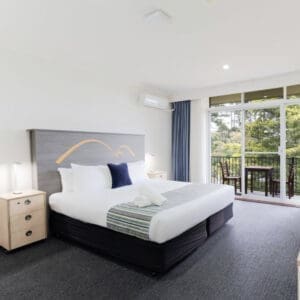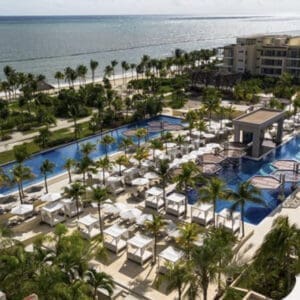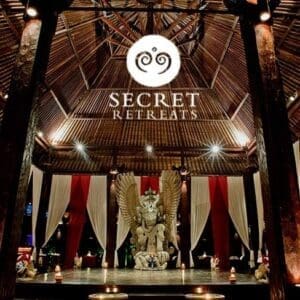 Club Med is on an expansion tear following its 2015 acquisition by China’s Fosun Group. The Paris-based originator of the all-inclusive resort plans to open 15 properties and renovate nine over the next three years, with a heavy emphasis on its parent company’s home turf.
Club Med is on an expansion tear following its 2015 acquisition by China’s Fosun Group. The Paris-based originator of the all-inclusive resort plans to open 15 properties and renovate nine over the next three years, with a heavy emphasis on its parent company’s home turf.
ÒLe ClubÓ struggled in recent years amid heightened competition and the prolonged recession in Europe. The nexus of its reinvention strategy is China, where it will target the wealthiest 1 per centÊof the nation’s population of 1.4 billion, which translates to a robust pool of 14 million travelers.
With plans to add 10 resorts to its current base of five properties over the long term, the Asian giant will become the company’sÊnumber twoÊmarket, behind France, according to Xavier Mufraggi, CEO of Club Med North America. ÒThat’s a major shift,Ó he says. ÒFosun is helping us identify (investment) partners based on their relationships.Ó
In China, Club Med will follow the model that succeeded in the Caribbean, Africa and Mexico Ñ create destinations in undeveloped areas, Mr Mufraggi says. The operator works as a catalyst in getting roads and other infrastructure built, and once that’s in place, other hotels and attractions follow. It would give Club Med a head start in dominating the all-inclusive formula in China but with a luxury twist.
ÒChina’s wealthy want the amenities of other well-heeled travelers such as luxurious bedding and fine wines,Ó Mr Mufraggi says. Unlike Europeans, who concentrate on a favorite sport such as golf or tennis, the Chinese demand a variety of activities. ÒThe Chinese make sure to test everything Ñ they love to try new stuff,Ó he adds.
That premise will be put to the test in ski resorts, where Club Med is staking a claim. ÒWhen we opened a ski resort in China (there are two in the northeast) people said, Ôare you crazy? Nobody knows how to ski in China,’Ó Mr Mufraggi recalls. ÒMaybe they don’t ski all day, but they take lessons and will hit the slopes for three hours a day.Ó Interest in skiing has been piqued by Beijing’s hosting of the Winter Olympics in 2022, he adds.
Ski resorts are risky because the business is seasonal, says Gregory Rumpel, Miami-based Managing Director of the HotelsÊand Hospitality Group at JLL. But he expects the novelty will appeal to affluent and status-conscious Chinese who want to compete with their friends and family members in trying the next big thing. ÒThis strategy puts Club Med once again on the new frontier,Ó he says.
Club Med, founded in 1950, pioneered the all-inclusive resort, initially focusing on singles and couples. As its customers aged, the company shifted its focus to families and then to more affluent consumers. But during the past decade, it was hit hard by the recession and new competitors such as Spain’s Riu and Iberostar. Jamaica’s Sandals Resorts turned the tables by advertising directly to consumers. The Internet made it possible for travelers to book their own low-cost adventures.
In 2013, Club Med CEO Henri Giscard d’Estaing, the son of France’s former prime minister, sought a friendly takeover by shareholder Fosun, the conglomerate owned by billionaire Guo Guangchang. That triggered a rival bid and a two-year takeover battle, the longest such fight in French corporate history. Fosun emerged victorious in early 2015 with its Û939 million (US$1.1 billion) bid and took the company private.
ÒThey needed to move upmarket to gain margin,Ó says Bruno Courtin, contributing Editor at Paris-based consultancy Hospitality ON. ÒGiscard d’Estaing’s challenge was, and still is, to replace the former Club Med Ôaddicts’ by new clients attracted by the upscale strategy.Ó
Since then, Club Med added three properties to bring its count to 68 and mapped out the current expansion. The company generated revenue of Û1.47 billion (about US$1.56 billion) last year. While China is a focal point, the other half of its upcoming US$1.5 billion expansion will be distributed among Europe, Africa and the Americas. In the Alps, where Club Med operates 20 ski resorts, three more will be added over the next three years, Mr Mufraggi says. The area is a magnet for Brazilians, Israelis and the British, and the strong dollar has made it a destination for Americans, he says.
Club Med’s strategy is smart because the company is spreading its bets among mature and developing markets, says Wouter Geerts, London-based Senior Travel Analyst at Euromonitor International. ÒThey’ve learned the necessity of targeting, that one size doesn’t fit all.Ó
The expansion will require a lot of capital, JLL’s Rumpel says. The average property costs US$100 million to US$120 million to develop. But it comes at a time when vast numbers of increasingly affluent Chinese, with an affinity for European brands, are eager to flaunt their wealth and travel in a way that was out of reach for their parents. With the company’s track record in China, the support of the government and Fosun, there’s a lot of untapped potential, analysts say. ÒClub Med has been doing this a long time,Ó MrÊRumpel says. ÒThe brand has a lot of legs.Ó















